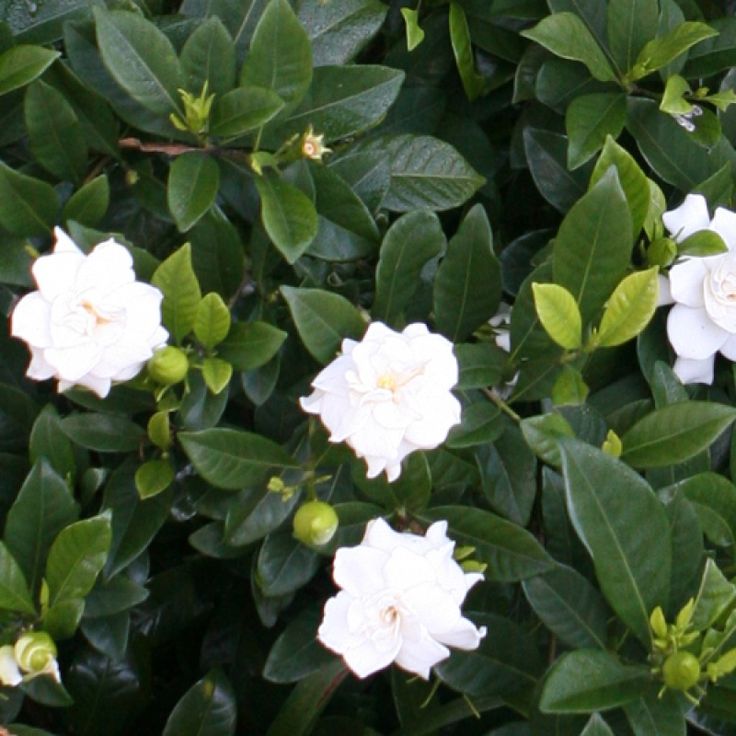Dwarf Gardenia Radicans

Dwarf gardenia radicans
Mature Height: 1-2 ft. Mature Width: 3-4 ft. Spacing: 2 ft. Growth Rate: up to 1 ft.
Do dwarf gardenias need full sun?
Dwarf gardenias, like their regular sized siblings, are evergreen shrubs with ethereal creamy, white flowers. They need full to partial sun for best bloom in rich, well-draining soil.
How do you take care of a Radicans dwarf gardenia?
But never wet. So you can water them really really well but then let them dry out between waterings.
Can Gardenia radicans take full sun?
Full sun to light shade lover, this Gardenia is best grown in consistently moist, acidic, organically rich, well-drained soils. Although it prefers full sun, some shade is appreciated during the warmer months of the year or its leaves may scorch and its buds may fall off if they get too much sunlight.
Do gardenias do better in pots or in the ground?
Outside, gardenia is best grown in a pot so it can be moved under cover in winter to protect from frosts or winds. In areas with favourable conditions year-round, plant gardenia in a raised bed or in the ground.
Do gardenias like full sun or part shade?
Gardenias perform best when they receive intense morning light and shade from the hot afternoon sun. Sun exposure is necessary for proper flower bud development – with too little sun plants will produce leggy growth and few flowers. On the other hand, too much sun can cause blooms to fade quickly.
Can gardenias be left outside in winter?
These flowering evergreen shrubs are hardy in areas that have hard freezes, but not where winter temperatures sink below 10°F, or for some types, below 5 or even -5°F. If you have your heart set on gardenias but you live in an area with winter weather they can't survive, you can still grow them.
Do dwarf gardenias stay green all year?
All gardenias are evergreen shrubs and small trees that retain their leaves all year round. However, exposure to low temperatures and frigid conditions causes their foliage to discolor and wilt. This is especially true for non-cold hardy varieties.
Why are gardenias so hard to grow?
Gardenias are known to be a bit of a challenge for gardeners. Frankly, the plant is picky and often needs more attention than other flowering shrubs. It prefers fairly acidic soil (a pH of 5.0 to 6.0), likes a tropical climate (but suffers in too much direct sun), and doesn't transplant well.
How often do dwarf gardenias bloom?
across (5 cm), with bright golden stamens. Blooming in late spring or early summer and sporadically during the rest of the summer, this handsome rounded shrub deserves a spot near entryways and patios where its wonderful fragrance can be enjoyed.
Do dwarf gardenias bloom all summer?
As the common name implies, this gardenia's habit is low and spreading with a dwarf habit. The showy white flowers have the same heady fragrance as the parent plant but they are smaller. Prune off dead blooms to encourage rebloom. It will bloom boldly in late spring, and then on and off through the summer.
Why do dwarf gardenia leaves turn yellow?
The most likely reason for yellow leaves on gardenias is low iron. But guess what? You don't need to add iron to solve the problem; you need to test the soil. Gardenias need acidic soil, which means soil with a pH between 5.0 and 6.5.
Do gardenias like being in pots?
Gardenias grow very well in containers or pots and can add beauty and fragrance to a patio, front porch or terrace. These evergreen fragrant plants are easy to grow outdoors in containers. They are easy to care for and only require occasional pruning to keep their shape and size.
Should you cover gardenias in the winter?
Gardenias can still survive the winter with proper care. But, they should be covered up whenever there is a chance of frost and freezing temperatures.
How far apart should you plant dwarf gardenias?
Spacing Your Dwarf Radicans Gardenia Plant your Jubilation Gardenias 2 feet apart from center to center for a seamless planting. Otherwise, plant them 5+ feet apart for space between each mature plant.
Do coffee grounds help gardenias?
Are Coffee Grounds Good for Gardenias? Don't worry about adding more coffee grounds to your gardenia soil; these flowers absolutely love coffee. In addition to being an excellent source of nitrogen, the acid in coffee lowers the pH of the surrounding soil, stimulating the roots of acid-loving plants such as gardenias.
Should I put coffee grounds on my gardenias?
Gardenias. Gardenias will appreciate coffee grounds mixed into the soil as well. Since they are rich in nitrogen, magnesium, and potassium, spent coffee grounds are oftentimes a more favorable gardenia fertilizer than commercially available Fertilizers.
What is a good companion plant for gardenias?
Perennials: Hostas and ferns are classic companions, as are cast iron plant, Brunnera, toad lilies, and Solomon's seal. Annuals: Reach for colorful annuals like impatiens, wax begonias, and blue torenia to complement your gardenia display.
Do gardenias like lots of water?
Gardenias need at least an inch of water a week, whether from rainfall or a hose. Apply mulch to a depth of two to four inches to help keep moisture in the soil and control water-hogging weeds. Don't let the plants become completely dry before you water, and water regularly.
What is the best location for gardenias?
Select a site with full sun to light shade. Although a Gardenia plant prefers full sun, some shade is appreciated during the warmer months of the year or its leaves may scorch and its buds may fall off if they get too much sunlight. In hot climates, Gardenias grow best with morning sun and afternoon shade.










Post a Comment for "Dwarf Gardenia Radicans "